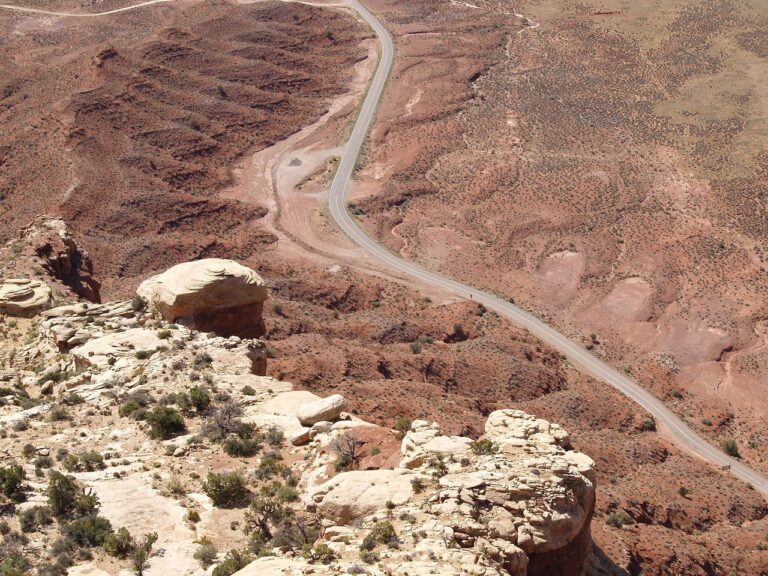Exploring the world’s most captivating limestone caves: underground chambers adorned with stunning formations
Limestone caves are some of the most captivating natural wonders on our planet. These underground chambers are adorned with stunning formations that have been millions of years in the making. From stalactites and stalagmites to flowstones and cave pearls, limestone caves offer a glimpse into the incredible forces of nature that shape our world. In this article, we’ll explore some of the world’s most mesmerizing limestone caves, each with its own unique beauty and charm.
1. Carlsbad Caverns, New Mexico, USA
Carlsbad Caverns is a UNESCO World Heritage Site located in the Chihuahuan Desert of New Mexico. Its main chamber, known as the Big Room, is the largest cave chamber in North America, measuring over 4,000 feet long and 255 feet high. The cave is filled with spectacular limestone formations, including columns, draperies, and soda straws.
2. Mammoth Cave, Kentucky, USA
Mammoth Cave is the world’s longest known cave system, with over 400 miles of explored passageways. The cave is famous for its massive chambers, intricate labyrinths, and unique gypsum formations. Visitors can take guided tours to explore different sections of the cave and learn about its geology and history.
3. Waitomo Glowworm Caves, New Zealand
The Waitomo Glowworm Caves are known for their magical display of bioluminescent glowworms. These tiny creatures create a starry night sky effect as they illuminate the walls and ceiling of the cave. Visitors can take boat tours to marvel at this natural light show and learn about the unique ecosystem of the cave.
4. Son Doong Cave, Vietnam
Son Doong Cave is the world’s largest cave by volume, featuring massive chambers and underground rivers. The cave was only recently discovered in 2009 and opened to tourists in 2013. Its stunning formations, including giant stalagmites and cave pearls, make it a must-see destination for adventurous travelers.
5. Jenolan Caves, Australia
Located in the Blue Mountains of New South Wales, the Jenolan Caves are renowned for their breathtaking limestone formations. The cave system consists of over 40 caves, each with its own unique features, such as crystal formations, underground rivers, and ancient fossils. Guided tours allow visitors to explore this natural wonderland and learn about its geological significance.
6. Caves of Aggtelek Karst and Slovak Karst, Hungary and Slovakia
The Caves of Aggtelek Karst and Slovak Karst form a UNESCO World Heritage Site that spans the border between Hungary and Slovakia. The cave system is known for its diverse range of formations, including stunning stalactites, stalagmites, and flowstones. Visitors can take guided tours to explore this underground world and witness the remarkable beauty of these limestone caves.
7. Sarawak Chamber, Borneo
Sarawak Chamber is the largest underground chamber in the world, located in Gunung Mulu National Park on the island of Borneo. The chamber is so massive that it could accommodate several Boeing 747 airplanes stacked on top of each other. It is a popular destination for adventurers and cave explorers seeking to witness the grandeur of this natural wonder.
8. Jewel Cave, Western Australia
Jewel Cave is one of the most spectacular limestone caves in Australia, known for its dazzling array of stalactites, stalagmites, and helictites. The cave is named after its glittering calcite crystals that resemble jewels. Guided tours offer visitors the opportunity to explore the cave’s intricate formations and learn about its geological history.
9. Reed Flute Cave, China
Reed Flute Cave is a popular tourist attraction in Guilin, China, known for its colorful limestone formations and ancient inscriptions. The cave derives its name from the reeds growing outside that were once used to make flutes. Visitors can take boat tours through the cave’s illuminated passageways to admire its stunning rock formations and learn about its cultural significance.
10. Aven Armand, France
Aven Armand is a vast limestone cave located in the C鶥nnes National Park of France. The cave is home to one of the largest stalagmites in the world, measuring over 30 meters in height. Visitors can take guided tours to explore the cave’s magnificent formations and learn about its geological processes.
Conclusion
Limestone caves are truly marvels of nature, showcasing the incredible beauty and complexity of our planet’s geology. Whether you’re exploring the massive chambers of Carlsbad Caverns or marveling at the bioluminescent glowworms of Waitomo Glowworm Caves, each limestone cave offers a unique and unforgettable experience. So, pack your bags, grab your flashlight, and embark on a journey to discover the world’s most captivating limestone caves.
FAQs
Q: Are limestone caves dangerous to explore?
A: While limestone caves can be fascinating to explore, they can also pose risks such as slippery surfaces, low ceilings, and narrow passageways. It’s essential to follow safety guidelines and take guided tours when visiting limestone caves to ensure a safe and enjoyable experience.
Q: How are limestone formations such as stalactites and stalagmites formed?
A: Limestone formations in caves are created by the slow deposition of calcium carbonate-rich water dripping from the cave ceiling. Stalactites form from minerals dripping down from the ceiling, while stalagmites grow upwards from the cave floor as water drips onto them. Over thousands of years, these formations grow and take on various shapes and sizes.
Q: Can limestone caves be damaged by human activity?
A: Yes, limestone caves are fragile ecosystems that can be harmed by human activities such as vandalism, littering, and pollution. It’s crucial for visitors to respect the environment and adhere to cave conservation guidelines to preserve these natural wonders for future generations.







